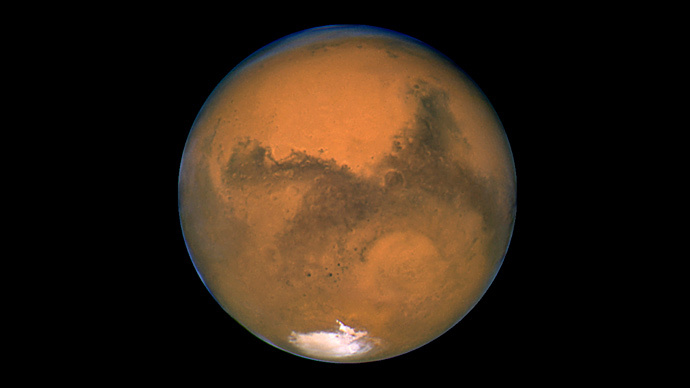Opal discovery on Mars may be key to proving ancient life on Red Planet

Researchers have discovered traces of opal on Mars, leading them to believe it may help prove that the Red Planet was once home to life. The gemstone was discovered in a Martian meteorite, which fell to Earth in 1911.
The opal was discovered by Glasgow University earth scientist Martin Lee and his team while examining the Nakhla meteorite, which fell from Mars to Egypt over a century ago.
After studying the space rock with a scanning electron microscope, the researchers found trace amounts of the gemstone, confirming readings from Martian rovers that opal indeed exists in the Red Planet’s crust.
The gemstone was likely created by the interaction of water with silica. It is the first time that a piece of Mars on Earth has been found to contain opal.
11yrs on Mars! NASA releases 8 min long time-lapse of Opportunity rover journey (VIDEO) http://t.co/Q3IxyuY1rkpic.twitter.com/IZ6Qj9SpI8
— RT (@RT_com) July 7, 2015
But the findings – published in the journal Meteoritics and Planetary Science – could represent something much more significant than the mere presence of a gemstone.
According to the researchers, the opal may prove that life once existed on the Red Planet.
“We know that on Earth opals like these are often formed in and around hot springs. Microbial life thrives in these conditions, and opal can trap and preserve these microbes for millions of years,” Lee said in a statement.
“If Martian microbes existed, it's possible they too may be preserved in opal deposits on the surface of Mars. Closer study of Martian opals by future missions to Mars could well help us learn more about the planet's past and whether it once held life,” he added.
‘Not to visit, but to stay in space’: Human-engineered organisms may make Mars more Earth-like http://t.co/8H9nGGZsxQpic.twitter.com/OvvN6PiOm6
— RT (@RT_com) June 29, 2015
The finding could be a foundation for future research of the Martian surface, which could focus on the study of opals to understand the history of the Red Planet – including the possibility of ancient life.
This is not the first time that Nakhla has provided scientists with valuable information. In 2013, the same team discovered the first direct evidence of water dissolving on the surface of the Red Planet.
Named after the Egyptian town on which it fell in 1911, Nakhla is owned by the Natural History Museum in London.












